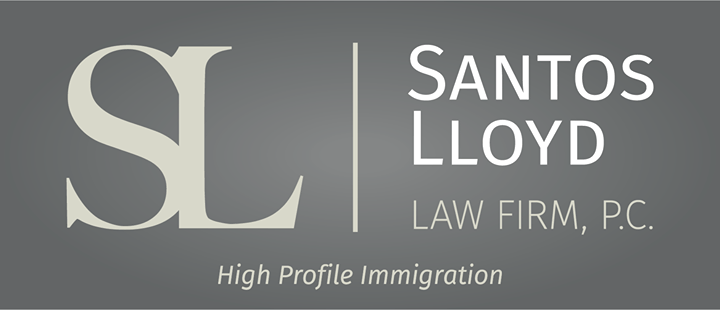EB-2 and EB-3 Green Cards: What Corporate Employees Should Understand
Shirin Navabi • June 26, 2025
As an immigration law firm, we regularly assist highly skilled professionals working in the U.S. on temporary work visas such as H-1B who are seeking a path to permanent residency. For many of these individuals, the EB-2 and EB-3 employment-based green card categories are the most pursued—and frequently misunderstood—routes. While both are viable pathways to permanent residency, they differ in meaningful ways that can significantly impact the timing, eligibility, and overall strategy of your case.
The EB-2 category is intended for individuals who either hold an advanced degree or demonstrate exceptional ability in their field. Most applicants qualify by having a master’s degree (or higher), or a bachelor’s degree accompanied by at least five years of progressive experience in their profession. There is also a subcategory within EB-2 known as the National Interest Waiver (NIW), which allows qualified individuals to self-petition without employer sponsorship if their work substantially benefits the United States. This route is especially relevant for researchers, entrepreneurs, and professionals in high national interest or mission-critical fields.
In contrast, the EB-3 category includes professionals with a bachelor’s degree as well as skilled workers with at least two years of training or experience. While the educational threshold for EB-3 may appear less rigorous, the process itself is equally structured. One key distinction between EB-2 and EB-3 lies in the requirements of the job being offered, not just the applicant’s own credentials. For example, if a position requires only a bachelor’s degree, even a highly qualified candidate with a master’s degree may still fall under EB-3.
Regardless of which category applies, most employment-based green card cases begin with the PERM labor certification process. This is a formal procedure overseen by the U.S. Department of Labor, in which the employer must test the labor market and demonstrate that there are no able, willing, qualified, and available U.S. workers for the position. The employer must also agree to pay the prevailing wage as determined by the Department of Labor. This step is both mandatory and highly detail-sensitive; inaccuracies in the job description, recruitment steps, or wage determination can lead to significant delays or even denials.
Once PERM certification is approved, the employer files Form I-140, the Immigrant Petition for Alien Worker. This petition confirms that the employee meets the requirements for the offered position under either EB-2 or EB-3, and that the employer is financially capable of providing the job as described. If the employee’s priority date—which is based on the date the PERM was filed—is current according to the Department of State’s Visa Bulletin, the individual may then file Form I-485
to adjust their status to lawful permanent resident.
One of the more nuanced aspects of this process involves understanding how priority dates and visa backlogs affect the timeline. For applicants from countries with high demand, such as India or China, significant delays are common—particularly under EB-2. Paradoxically, there are times when the EB-3 category moves faster, prompting some applicants to file a second I-140 under EB-3 while retaining the original priority date. This strategy can be effective but requires careful legal planning to ensure it’s done correctly.
Another strategic factor is portability. If your I-485 application has been pending for at least 180 days and your I-140 has been approved, you may be eligible to change employers under the AC21 portability provisions, so long as the new job is in the same or a similar occupational classification. This flexibility can be critical for employees who experience job changes or promotions during the often lengthy green card process.
Ultimately, the choice between EB-2 and EB-3 isn’t about prestige—it’s about aligning your qualifications, the job requirements, and your immigration history with current legal standards and market conditions. The right strategy depends not only on your education and experience, but also on your long-term career goals and country of origin.
At our firm, we work closely with both employers and employees to develop individualized immigration strategies that streamline the process and avoid unnecessary setbacks. Whether you're a corporate professional evaluating your green card options or an employer preparing to sponsor a key team member, we offer the insight and experience to move your case forward with confidence.
This blog is not intended to be legal advice and nothing here should be construed as establishing an attorney client relationship. Please schedule a consultation with an immigration attorney before acting on any information read here.
Shirin Navabi
Similar Posts

Embarking on the exhilarating journey of launching a new tech startup in the United States is a venture that blends innovation with ambition, and the dynamic landscape of the country offers an unparalleled stage for entrepreneurs to turn their groundbreaking ideas into thriving businesses. The United States highly values its position among the technology leaders of the world. In a nation fueled by a relentless pursuit of technological advancements, the process of bringing a startup to life involves navigating through a myriad of opportunities, challenges, and regulatory landscapes. This is particularly true for foreign entrepreneurs, who must also navigate the immigration system in addition to focusing on launching their businesses. Nevertheless, the United States recognizes the value in bringing technological innovators into the country and has created special considerations for immigrants with education in STEM (Science, Technology, Engineering, and Mathematics) who are seeking to develop important cutting-edge technologies in the United States. These special considerations apply to the EB-2 National Interest Waiver, an immigrant visa classification which leads to permanent residency, and eventually citizenship in the United States. At the heart of every EB-2 National Interest Waiver petition is a proposed endeavor, and while these proposals for the United States can be about nearly anything, the Immigration Service is directed to recognize particular importance for proposals that aim to develop specific technologies that the Biden administration has identified as critical for U.S. competitiveness and national security. In particular, these areas of critical and emerging technologies include: Advanced Computing Advanced Engineering Materials Advanced Gas Turbine Engine Technologies Advanced Manufacturing Advanced and Networked Sensing and Signature Management Advanced Nuclear Energy Technologies Artificial Intelligence Autonomous Systems and Robotics Biotechnologies Communication and Networking Technologies Directed Energy Financial Technologies Human-Machine Interfaces Hypersonics Networked Sensors and Sensing Quantum Information Technologies Renewable Energy Generation and Storage Semiconductors and Microelectronics Space Technologies and Systems If you are a tech entrepreneur with an education in a STEM field, seeking to launch a startup in the U.S. developing any of these technologies, the EB-2 National Interest Waiver might be your ticket to permanent residency. Whether you're drawn to the iconic landscapes of Silicon Valley or the emerging tech scenes across the nation, the time is now to make your mark. If you are interested in applying for a National Interest Waiver to launch a startup in the United States, schedule an appointment with one of our skilled attorneys.

In the landscape of U.S. immigration law, the pursuit of an employment-based green card can be a significant milestone for foreign nationals aspiring to establish their careers in the United States. Among the various pathways available, self-sponsorship for an employment-based green card stands out as an option that grants individuals the ability to sponsor their own immigration journey, offering a unique opportunity for skilled professionals and entrepreneurs. Traditionally, most employment-based green card categories require an employer to sponsor the foreign national, demonstrating the need for their skills or expertise. However, certain visa categories permit self-sponsorship, allowing individuals to petition for permanent residency without a specific employer's sponsorship. These include: 1. EB-1A Extraordinary Ability: Individuals with extraordinary abilities in the sciences, arts, education, business, or athletics may self-petition for an employment-based green card. They must demonstrate sustained national or international acclaim, providing extensive evidence of their achievements in their field. 2. EB-2 National Interest Waiver (NIW): This category enables individuals whose work is deemed to be in the interest of the United States to self-sponsor. Applicants must demonstrate their work's significance and how it benefits the nation as a whole. 3. EB-5 Immigrant Investor Program: Entrepreneurs investing in a new commercial enterprise that creates jobs for U.S. workers can self-petition for an employment-based green card. They must meet certain investment thresholds and fulfill job creation requirements. While these classifications have the advantage of allowing an individual to self-petition, each of these applications have distinct, stringent requirements to meet. This route can be challenging, requiring substantial evidence and a compelling case to prove extraordinary abilities or qualifications. Additionally, meeting the high standards set by USCIS for self-sponsorship can be demanding, necessitating thorough preparation and documentation. Navigating the complexities of immigration law, especially concerning self-sponsorship, often requires professional legal guidance. Seeking assistance from experienced immigration attorneys or consultants can significantly enhance the chances of a successful self-sponsored green card application, ensuring compliance with the intricate regulations and requirements. If you have any questions about what this means for you, please schedule a consultation with one of our experienced attorneys. We look forward to working with you.

There are several types of visas that allow you to come to the United States and work. Employment-based visas will give you the opportunity to live and work in the U.S. Your education, skills, and experience are some of the things used to determine who is eligible for an employment-based visa. One “EB” visa many people qualify for is an EB-3 visa.

For many talented athletes around the world, U.S. college athletics represent a remarkable opportunity to combine elite athletic competition with higher education. In sports such as basketball, soccer, track and field, and tennis, among others, hundreds of colleges and universities across the United States offer struct

Under the new regulation, if a person filed or files Form I-589, Application for Asylum and for Withholding of Removal after October 1, 2024, and the application remains pending with USCIS for 365 days, the applicant must pay an Annual Asylum Fee (AAF) on the one-year anniversary of his or her filing date.

It’s no secret that the U.S. immigration system has faced increased scrutiny and change in recent months. From evolving policies to headlines filled with uncertainty, it’s understandable that many individuals are left wondering: Is this still the right time to pursue a future in the United States? The answer is yes—and here’s why. Despite the shifting political landscape, the core structure of U.S. immigration law remains firmly in place. While the process may appear more complex or demanding than it once was, the legal pathways to live, work, and thrive in the United States are still open and accessible to those who take the proper steps. What often gets lost in the conversation is that the United States remains a country built on innovation, creativity, and resilience. It continues to attract global talent, entrepreneurs, artists, and professionals from all walks of life. Whether you are launching a business, advancing your career, or seeking a better life for your family, the United States offers unparalleled opportunities to those who are prepared and determined. Much of what makes the United States a global economic and technological leader today is the direct result of contributions made by immigrants. Nearly half of the current Fortune 500 companies were founded by immigrants or their children. Immigrant entrepreneurs have long been an essential part of America’s economic success story. Some of the largest and most recognizable American companies were founded by immigrants or the children of immigrants. This includes household names such as Apple and Costco. Moderna, the pharmaceutical company and vaccine producer, was founded by a Canadian-born stem cell biologist, Derrick J. Rossi, whose parents themselves emigrated from Malta. These success stories are not outliers; they are part of a broader pattern that reflects the drive, innovation, and resilience that immigrants bring to the country. The United States also offers one of the most dynamic and diverse economies in the world. It is a place where hard work, fresh ideas, and entrepreneurial vision are rewarded. For creative professionals, business leaders, and investors, the United States provides a unique platform to grow, connect, and gain global influence. Its competitive marketplace, access to capital, and culture of innovation create unmatched opportunities for those ready to seize them. While the immigration process requires careful planning, that process is far from impossible. Indeed, having strong legal guidance is one of the most effective advantages an applicant can possess. Immigration law is complex, and each case must be evaluated individually. A clear, strategic plan tailored to your background and goals can significantly improve your chances of success. What may feel like a hurdle at first glance is often navigable with solid preparation and documentation. At our immigration law firm, we have had the privilege of assisting individuals from all over the world as they navigate these complexities. Time and again, we have witnessed how determination, careful preparation, and experienced legal counsel can turn uncertainty into opportunity and help transform a vision for the future into reality. If you have been uncertain about whether to move forward, let this be your sign to take the next step. The United States is still a land of possibilities. If you are ready to take that step, now is the time to act. Let us build your path forward together.




